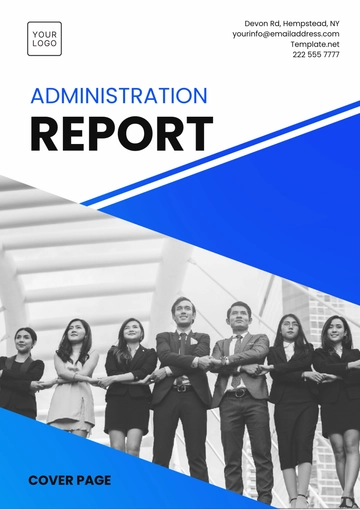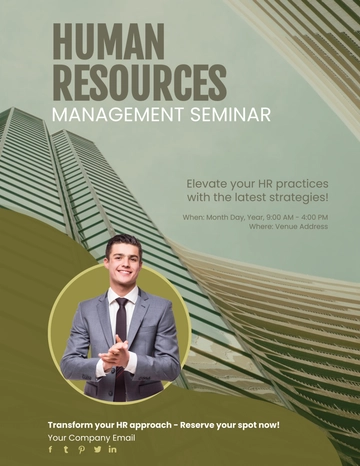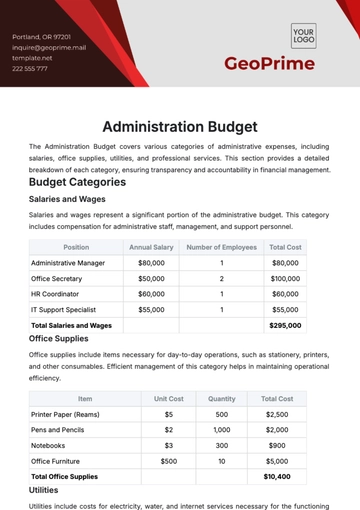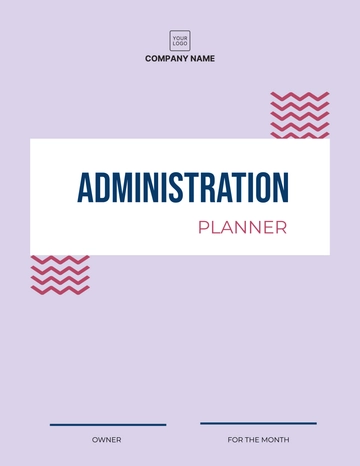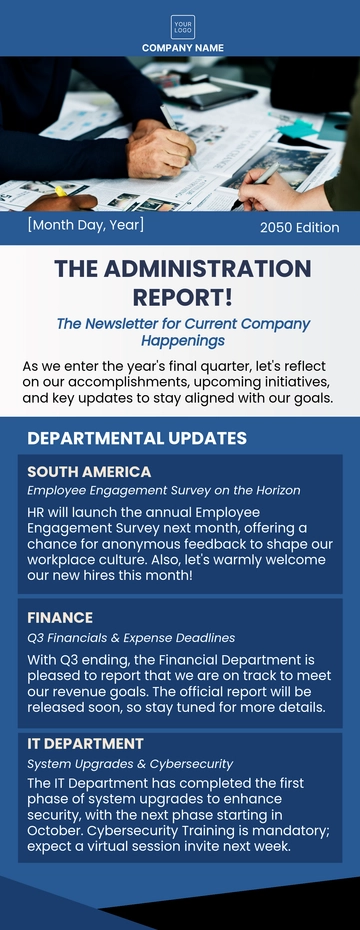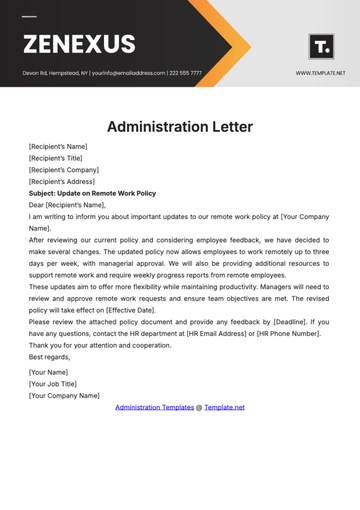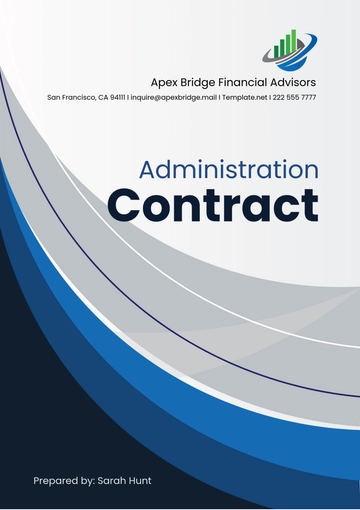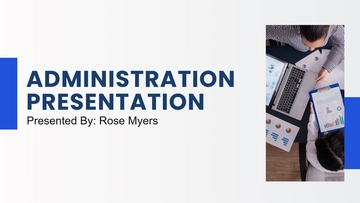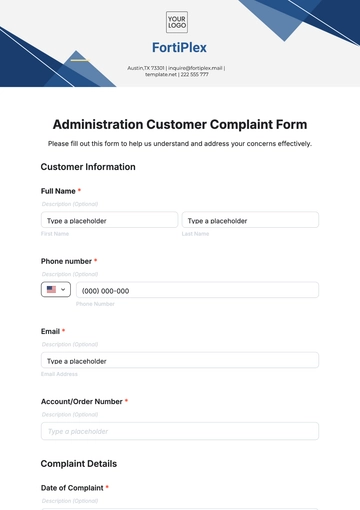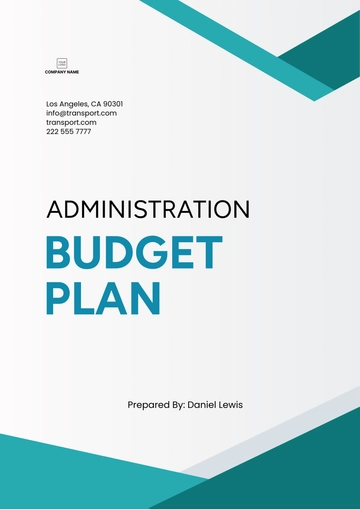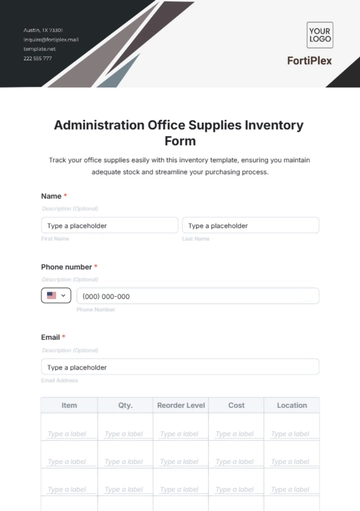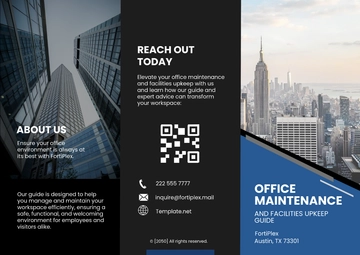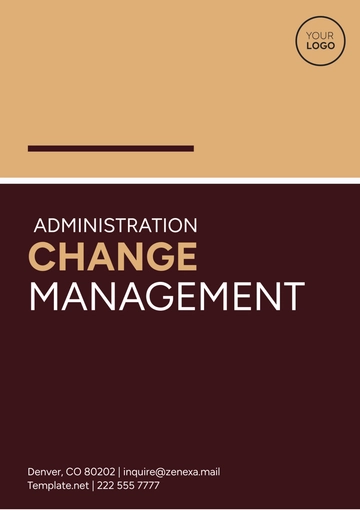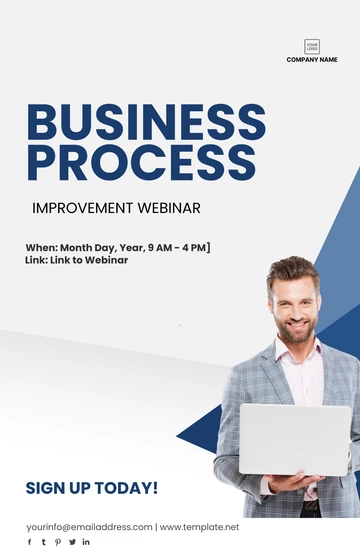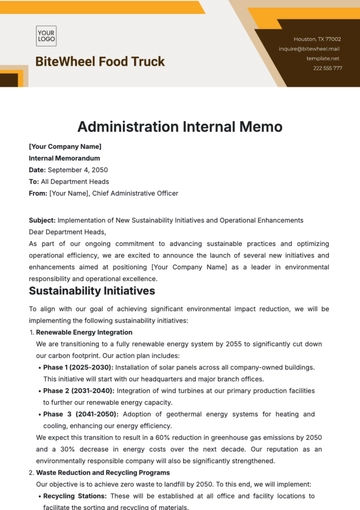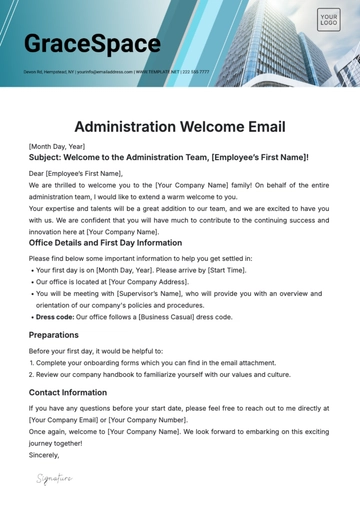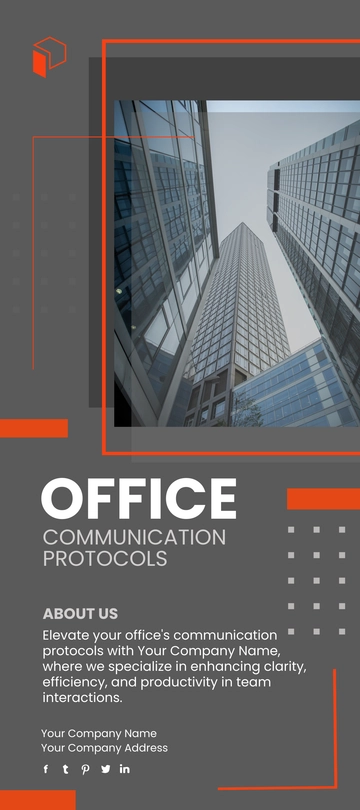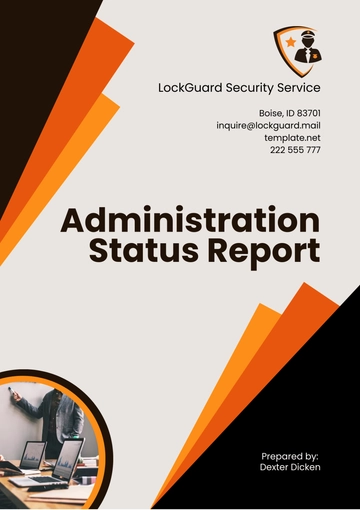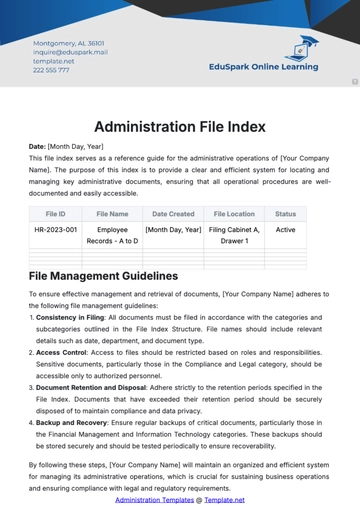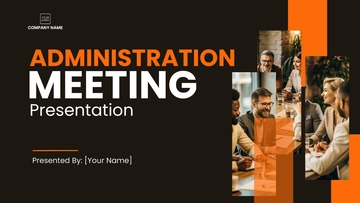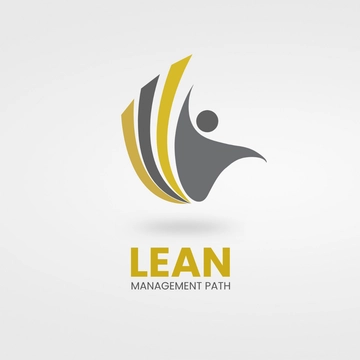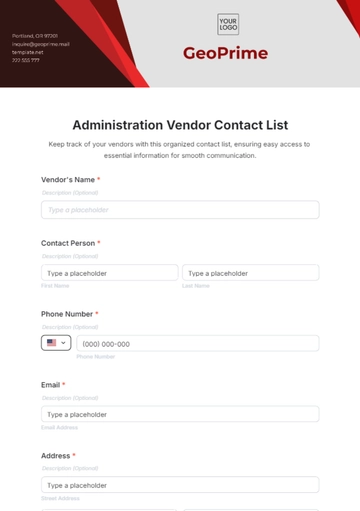Free Administration Meeting Planning Guide
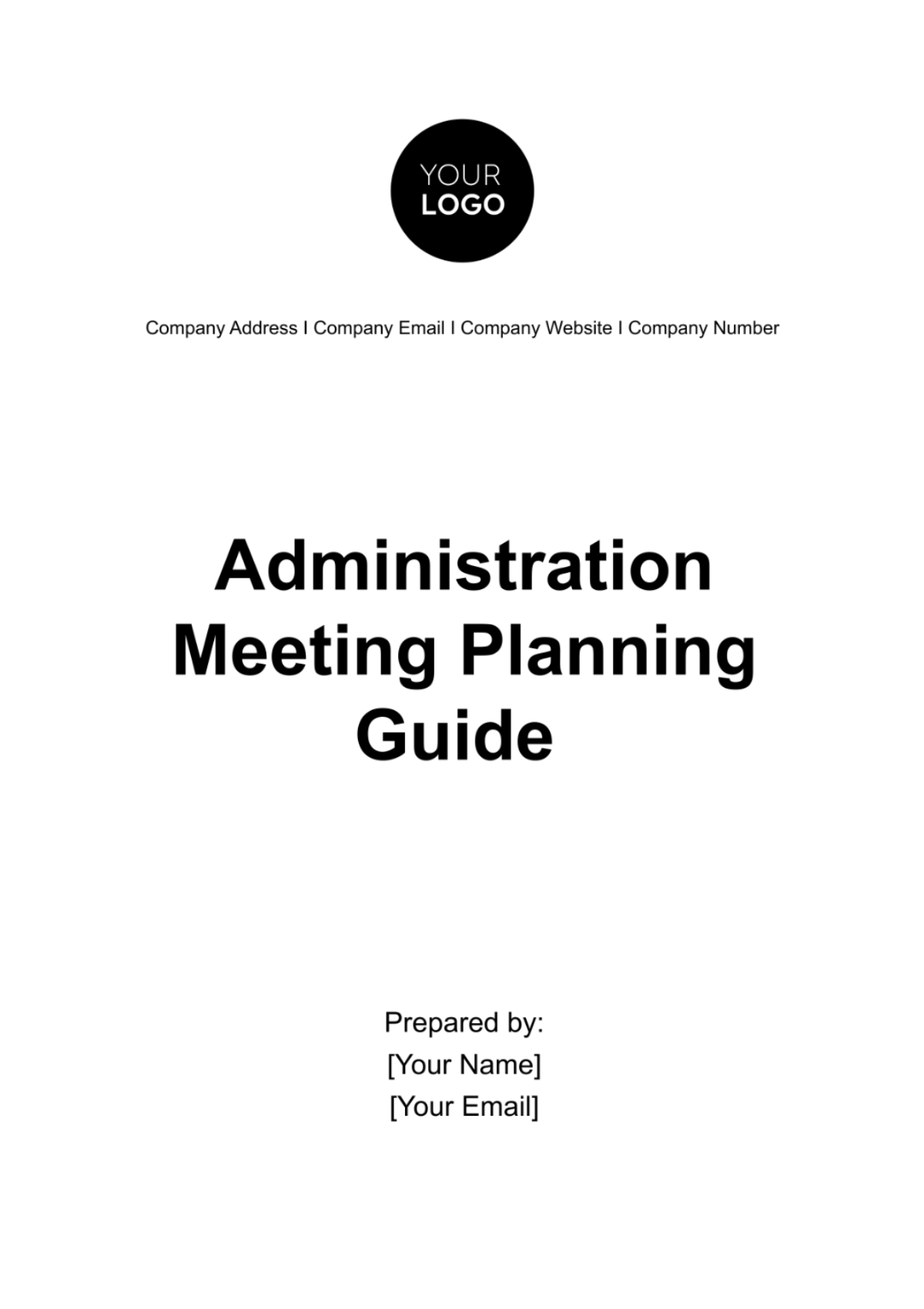
1. Introduction
We extend a warm welcome to you as you delve into the [Your Company Name] Administration Meeting Planning Guide. This resource, designed with great care and eye for detail, is a complete package providing essential planning and execution strategies to assist team leaders, project managers, and administrators alike. It aims to guide you through every stage of arranging and conducting your team meetings, and follow up afterward.
We believe this guide will play a pivotal role in enhancing the productivity and efficiency of your meetings, transforming them into actionable sessions that lead to tangible results. By equipping you with knowledge on the right preparation strategies and follow-up methods, this guide seeks to underline the significant contribution that well-structured meetings can make towards the overall success of your organization.
2. Pre-Meeting Preparation
2.1. Meeting Objectives
Purpose Identification: Every meeting should have a clear purpose. Whether it's decision-making, brainstorming, status updates, or problem-solving, the objective sets the tone for the meeting's content and discussions.
Example Objective: To review quarterly sales performance and strategize on improving underperforming areas.
2.2. Attendee List
Selecting Participants: Ensure that each attendee has a clear role or contribution to the meeting. Over-inviting can dilute the meeting's focus.
Example Attendee List:
Name | Department | Role in Meeting |
|---|---|---|
[Employee Name] | Sales | Present quarterly sales |
2.3. Agenda Creation
Developing an Agenda: A well-structured agenda outlines the topics to be discussed, allocates time for each item, and assigns presenters or discussion leads.
Sample Agenda:
Opening Remarks (5 minutes)
Quarterly Sales Performance Review ([Employee Name], 15 minutes)
Marketing Initiatives and Impact ([Employee Name], 15 minutes)
Product Updates and Roadmap ([Employee Name], 15 minutes)
Strategy Discussion and Action Items (20 minutes)
Closing Remarks (5 minutes)
2.4. Meeting Logistics
Setting the Scene: Choose a meeting format (in-person, virtual, hybrid) and ensure all logistical aspects are covered, including technology needs, room bookings, and refreshments if applicable.
Example Logistics Checklist:
Room reservation: Conference Room B
Virtual meeting link: [Zoom/Teams link]
Equipment check (projector, microphone, etc.)
Refreshment arrangement
2.5. Pre-Meeting Communications
Informing Participants: Send the agenda, objectives, and any pre-read materials to attendees well in advance. Include logistical details and expectations.
Example Email Template:
Subject: Upcoming Quarterly Review Meeting |
|---|
Dear [Name], You are invited to our quarterly review meeting scheduled for [Date & Time]. Please find the agenda attached. Your participation in the discussion on [specific topic] is highly valued. Kindly review the attached materials before the meeting. Location: [Location/Virtual Link] Looking forward to your insights. Best, [Your Name] |
3. During the Meeting
3.1. Opening the Meeting
The opening of the meeting is crucial for setting the tone and ensuring a productive session. Begin by welcoming all participants and quickly reiterating the meeting's objectives to align everyone's focus. It's also beneficial to do a quick round of introductions if there are new faces in the room or if the meeting includes external stakeholders. This builds a sense of community and comfort among participants, fostering a more open dialogue. Additionally, review the agenda briefly, highlighting the expected outcomes for each topic. This moment is also an opportunity to establish or remind participants of any meeting norms or etiquette, such as muting microphones when not speaking in a virtual setting or the process for raising questions.
3.2. Facilitating Discussion
Effective facilitation is key to a productive meeting. The facilitator should encourage participation from all attendees, ensuring that the discussion remains on topic and that all voices are heard. Techniques include asking open-ended questions, summarizing points for clarity, and tactfully managing dominant speakers to allow quieter members to contribute. It's important to address any conflicts that arise directly but respectfully, aiming to find common ground or agreeing to revisit contentious issues later if necessary. Using visual aids or collaboration tools can also enhance engagement, especially for complex topics or virtual meetings. The facilitator should be adept at reading the room and adjusting the pace or direction of the discussion as needed to meet the meeting's objectives.
3.3. Note-Taking and Documentation
Accurate note-taking and documentation during the meeting are vital for capturing decisions, action items, and responsibilities. Assign a dedicated note-taker or utilize collaborative note-taking tools where participants can contribute and view notes in real-time. The notes should clearly outline:
Outline | Description |
|---|---|
Decisions Made | Including the rationale behind each decision for future reference. |
Action Items | With specific tasks assigned to individuals, including deadlines. |
Key Discussion Points | Summarizing the main arguments or ideas presented. |
Post-meeting, these notes should be organized and distributed to all participants and relevant stakeholders who could not attend, ensuring transparency and accountability. This documentation serves as a record for reference and helps in tracking the progress of action items.
3.4. Time Management
Staying on schedule is crucial to respect participants' time and to ensure that all agenda items are covered. The facilitator should monitor the time spent on each topic, gently steering the conversation back on track if it diverges too significantly. It may be helpful to allocate specific time slots to each agenda item beforehand and to include some buffer time for open discussion or unforeseen issues. If it becomes apparent that a topic requires more time than allocated, decide whether to extend the discussion at the expense of later items or to schedule a follow-up meeting. Effective time management also involves knowing when to table non-critical discussions for later to maintain focus on the meeting's objectives.
4. Post-Meeting Follow-Up
4.1. Distributing Meeting Minutes
Promptly after the meeting, distribute the minutes or a summary of the meeting to all attendees and relevant parties who were not present. This document should include a brief overview of the topics discussed, decisions made, action items with assigned responsibilities, and deadlines for completion. Ensure the minutes are clear, concise, and free of jargon to be easily understood by everyone. The distribution of minutes not only keeps all stakeholders informed but also serves as a reminder of the commitments made during the meeting.
4.2. Action Items Tracking
Implement a system for tracking the progress of action items assigned during the meeting. This could be a shared digital workspace, project management software, or a simple spreadsheet, depending on the complexity of the tasks and the preferences of your team. Regularly update the status of each action item, and encourage responsible individuals to report their progress. This tracking process fosters accountability and ensures that tasks are progressing as planned, addressing any delays or obstacles promptly.
4.3. Feedback Collection
Gathering feedback on the meeting's effectiveness can provide valuable insights into areas for improvement. This can be done through a simple survey sent to all participants, asking for their views on the meeting's structure, pacing, content, and overall effectiveness. Encourage honest and constructive feedback, and be open to making adjustments based on the responses received. This continuous improvement process can help to refine future meetings, making them more efficient and productive.
4.4. Scheduling Follow-Up Meetings
If follow-up meetings are necessary, begin planning them as soon as possible after the initial meeting. Based on the availability of participants and the urgency of the topics to be discussed, propose potential dates and times. It's often useful to schedule these follow-ups at the end of the current meeting while everyone is present, to quickly secure a slot that works for the majority. Ensure that the objectives and preliminary agenda for these meetings are clear, so participants understand the importance of attending and are prepared to contribute effectively.
5. Conclusion and Summary
Effective meeting management is crucial for the operational success of [Your Company Name]. By following the guidelines outlined in this Administration Meeting Planning Guide, you can ensure that meetings are not only productive but also engaging for all participants. From the initial planning stages through to the follow-up actions, each phase of the meeting process plays a vital role in achieving the desired outcomes. Implementing these best practices will lead to more focused discussions, clearer decisions, and better accountability for action items, thereby driving forward the objectives of your organization.
5.1 Summary of Key Points
Pre-Meeting Preparation: Establish clear objectives, compile a focused attendee list, create a detailed agenda, organize logistics, and communicate expectations ahead of time.
During the Meeting: Open with a clear statement of purpose, facilitate inclusive and on-topic discussions, ensure thorough note-taking, and manage time effectively to cover all agenda items.
Post-Meeting Follow-Up: Distribute meeting minutes promptly, track the progress of action items, collect feedback to improve future meetings, and schedule any necessary follow-up meetings.
By emphasizing thorough preparation, engaged facilitation, and diligent follow-up, [Your Company Name] can enhance the effectiveness of its administrative meetings. This not only contributes to a more efficient use of time but also fosters a culture of transparency, accountability, and continuous improvement within the organization.
- 100% Customizable, free editor
- Access 1 Million+ Templates, photo’s & graphics
- Download or share as a template
- Click and replace photos, graphics, text, backgrounds
- Resize, crop, AI write & more
- Access advanced editor
Organize successful meetings with Template.net's Administration Meeting Planning Guide Template. Customizable and editable via our Ai Editor Tool, this template offers a structured approach to meeting preparation, execution, and follow-up. It's crucial for facilitating effective discussions, decision-making, and action plans, ensuring your meetings are productive and aligned with organizational objectives.
